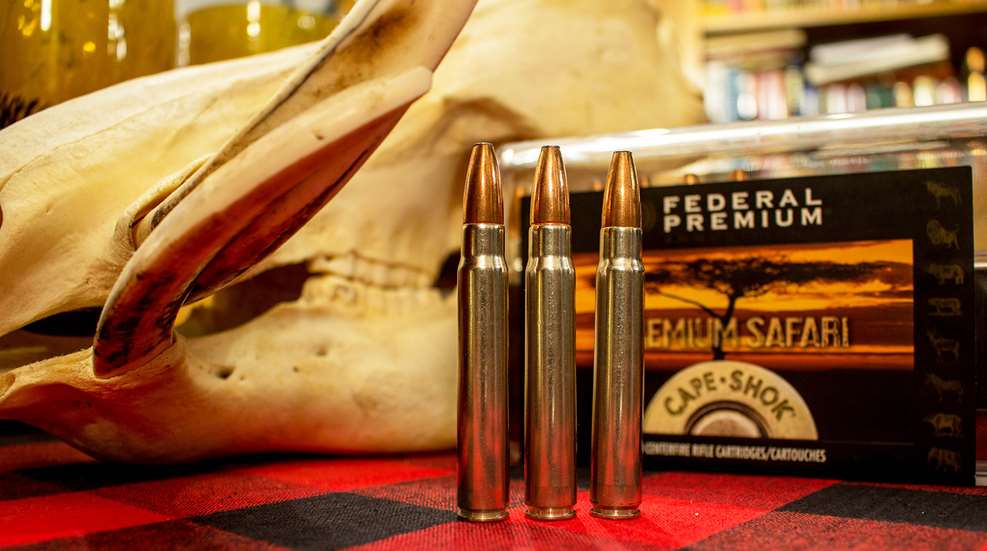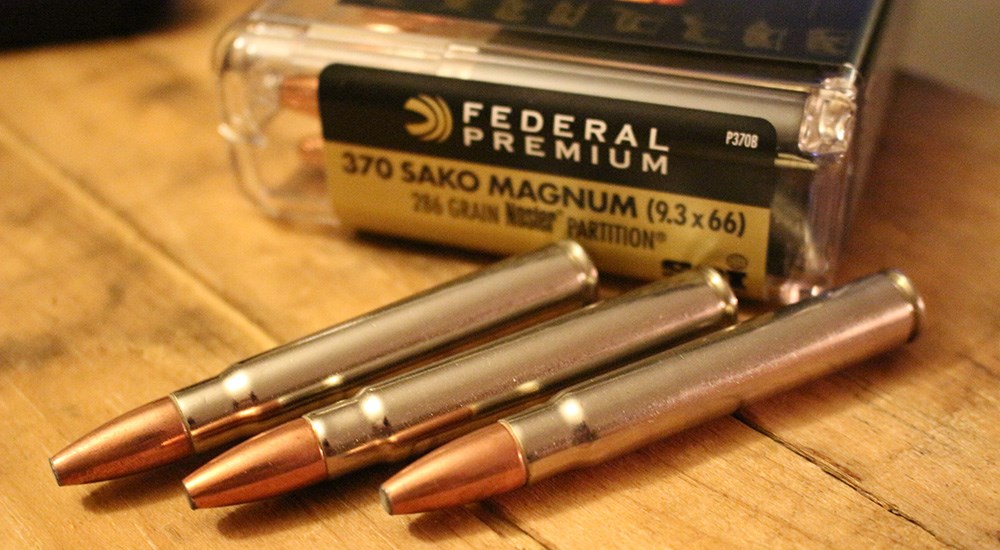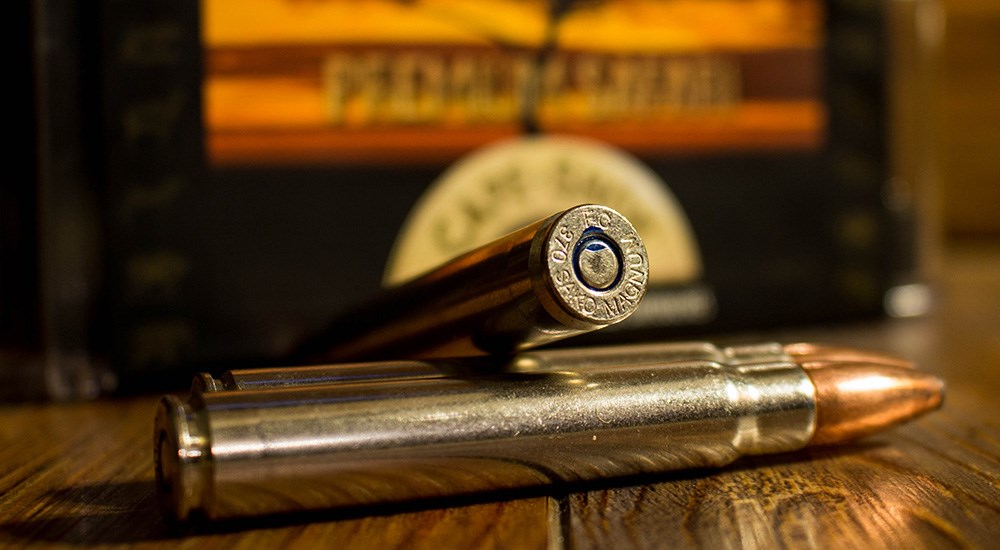https://www.americanhunter.org/content/behind-the-bullet-370-sako-magnum/by PHILIP MASSARO posted on March 28, 2023

The metric system has always been poorly received here in the United States, while having been adopted nearly the worldwide. We often struggle to adopt the metric cartridges—save the 7mm Remington Magnum and the more modern 6.5 Creedmoor—sometimes renaming them to something more familiar feeling. Many of the European bores have been renamed—the 7mms are .280, .284, .275 and the 6mms are .243 and .244—and some have been shunned altogether. The 9.3mm cartridges are one example; while the .375 H&H Magnum and similar cartridges have become favorites among the American shooting populous, the majority are unfamiliar with the slightly smaller 9.3mm cartridges. From the 9.3x62mm and 9.3x64 Brenneke to the 9.3x74R, this family of cartridges is often overlooked here in America, yet they make a great choice for the hunter. When is a 9.3mm not a 9.3mm? When the name is Americanized to the .370 Sako Magnum.
The 9.3mm bore equates to .366-inch, and sitting in between the .358-inch bore—which Americans have loved for so long—and the highly wide-ranging .375-inch bore is not a bad place to be, at all. Otto Bock’s 9.3x62mm Mauser, having been released nearly a century before the .370 Sako Magnum, affords a healthy following throughout Europe, and also in those African countries which were former European colonies. Designed for use in the 98 Mauser, the 9.3x62mm works just fine in that classic bolt-action rifle. Wilhelm Brenneke introduced his 9.3x64mm Brenneke in 1927, giving a boost in velocities for those who preferred the repeating rifles, giving performance on par with the .375 H&H Magnum in a rifle with a shorter receiver.

Federal Premium 370 Sako Magnum Nosler Partition ammunition.
In 2003, the Finnish firearms manufacturer Sako released their own variant of the 9.3mm rimless cartridge: the 9.3x66mm Sako, or as it is known here in America, the .370 Sako Magnum. It is, in essence, an elongated version of the 9.3x62mm Mauser, sharing many of the same characteristics in a longer format. It has the same 0.473-inch rim diameter common to the Mauser family of cartridges (carried over to a significant number of our American cartridges, including the .30-06 Springfield and .308 Winchester), and uses a 17 ½-degree shoulder; the .30-06 Springfield uses the same shoulder angle, and the 9.3x62mm uses a 17-degree shoulder. Like the 9.3x62mm, the .370 Sako Magnum has a neck length of 0.307 inches; this is less than the desired one-caliber in length, and many reloaders insist on using a stout roll crimp to keep the projectiles where they put them, instead of relying on neck tension alone. With a case length of 2.598 inches (read 66mm) the .370 Sako offers an increased powder capacity when compared to the 9.3x62mm, yet the longer case maintains the 3.340-inch cartridge overall length common to a standard, long-action receiver.
Federal Premium loads the 286-grain bullets in the .370 Sako Magnum at a muzzle velocity of 2550 fps, generating 4,129 ft.-lbs. of energy at the muzzle. Comparing this to the classic 9.3x62mm, you’ll see the shorter cartridge launching the same bullet at 2360 fps, for 3,537 ft.-lbs. The .370 Sako Magnum is often (and rightfully) compared to the .375 H&H Magnum, which uses a 300-grain bullet at velocities ranging from 2440 fps to 2530 fps, delivering 4,000 to 4,250 ft.-lbs. of energy at the muzzle. There are some African countries which specify a minimum of .375-inch bore diameter for hunting dangerous game, but in those countries where the 9.3mm cartridges are legal, I would have no qualms using the .370 Sako Magnum. The .375s will have a slightly larger frontal diameter, but the 300-grain .375 bullet and the 286-grain 9.3mm bullet share the same sectional density (S.D.) value of 0.305; any bullet with a S.D. value over .300 is considered to be a good choice for dangerous game work.

370 Sako Magnum ammunition cartridge head stamp.
Looking at the trajectory of the .370 Sako Magnum (in the guise of Federal’s 286-grain Swift A-Frame load), a 200-yard zero will see the bullet striking 2.5 inches high at 100 yards, 10.1 inches low at 300 yards, and 30 inches low at 400 yards. This results in a rather flexible package; while the .370 Sako Magnum might not shoot as flat as a .300 Winchester Magnum with a sleek spitzer boattail, its trajectory isn’t radically different from the .30-06 Springfield, and makes a good choice for a bull moose across the swamp, a bull elk across a canyon, a Cape buffalo in the jesse, or a kudu in the rooibos.
The 9.3x64mm Brenneke can deliver slightly higher velocities than the .370 Sako Magnum by about 50 fps but the case dimensions are unique, and will require a unique bolt face which will result in a more expensive rifle. Does the .370 Sako Magnum have a future? Well, it absolutely should, as it delivers performance on par with the beloved .375 H&H, in a package which can hold one additional round in the magazine, in a lighter rifle. I also find the recoil of the .370 Sako Magnum to have less recoil than does the .375 H&H, and not much more than that of the 9.3x62mm.
Of late it seems the popularity of the .370 Sako has all but disappeared. Federal Premium still has two loads listed (and currently available) on their website: a 286-grain Swift A-Frame and a 286-grain Woodleigh Hydrostatically Stabilized Solid, both at 2550 fps. Other than the Federal ammo, you’d have to either handload the .370 Sako or contact one of the boutique ammo shops to make your ammunition. Despite the lack of popularity, if I found a Sako Model 85 chambered for the .370 Sako Magnum and it fit me well, I wouldn’t hesitate to take that rifle for any of the bigger game species.